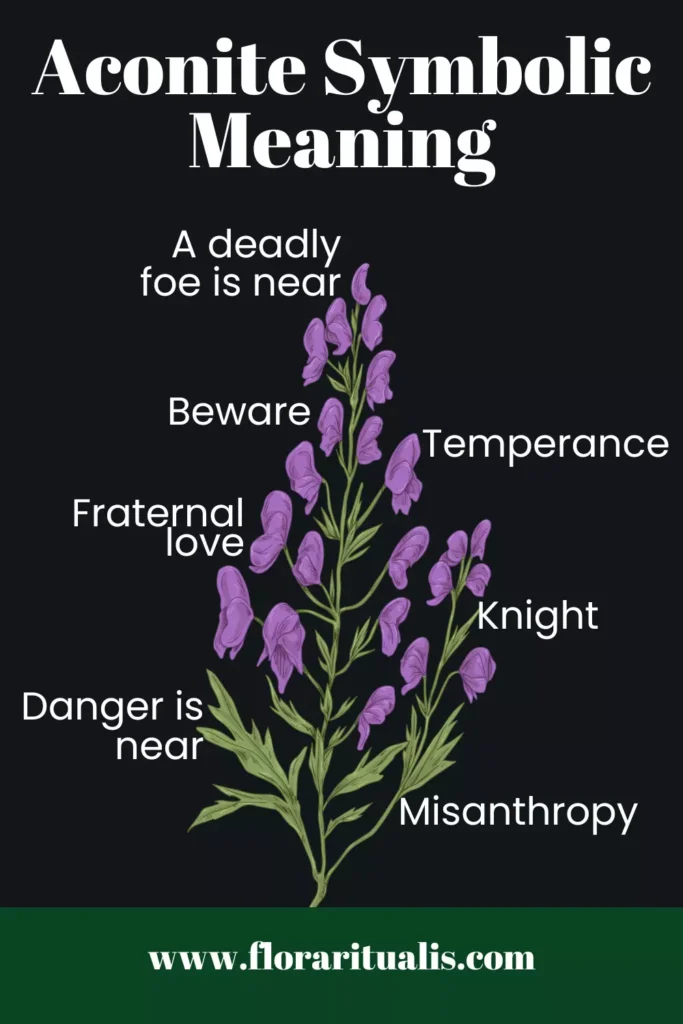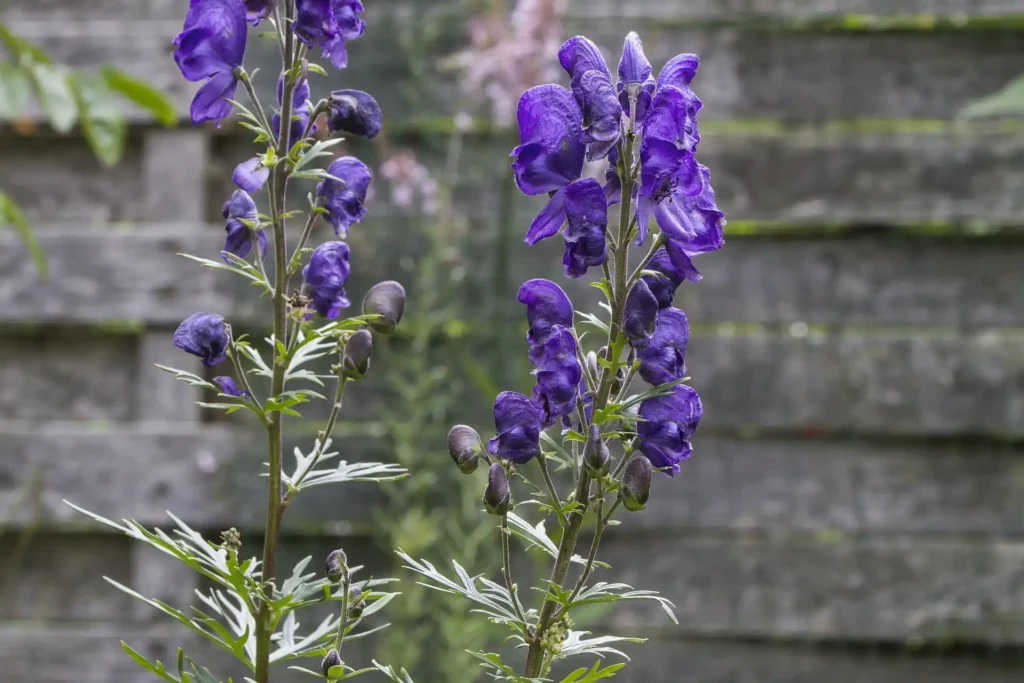The Aconite flower meaning comes from its uses and the folklore attached to it.
The plant is also commonly known as Monkshood, Wolfsbane or Helmet flower.
The plant usually comes up through the snow and they start flowering in early spring.
In this blog lets explore the symbolic meaning of the aconite flower. We will also get into its name origins, the myths surrounding the plant and its uses.
What does the Aconite symbolise?
The Aconite flower’s symbolic meanings are impending danger, fraternal love, treachery and deceit. The plant also has some powers linked to it such as invisibility and protection from both vampires and werewolves. Aconitum Napellus falls under the dominion of Saturn and Mars in alchemy and astrology.
This makes the Aconite a birth flower of Capricorn, Aquarius, Scorpio and Aries zodiacs.
Aconite flower meaning using name origins and myths
As aforementioned the Aconite has two other names Monk’s hood and Wolf’s Bane.
Monk’s Hood derives from the resemblance of the plant’s sepal to that of the hood of a monk. While Wolf’s Bane was given due to ancient people dipping their arrows in Aconite in order to hunt wolves.
It comes as no surprise that this flower is associated with the goddess Hecate by Pliny.
There are various myths associated with the Aconite flower meaning in Greek mythology. In one account the goddess Hecate invented the aconite flower. The flower was then used by the goddess Athena to transform Arachne into a spider.
In another myth the Aconite flower links to the hero Hercules. After his battle with Cerberus in his twelfth battle Aconite grew from its foam.
In yet another legend the flower came from the wound that flew from the body of Prometheus.

Aconite flower uses
In India the species of Aconitum ferox was used for medicinal purpose as per the Ayurveda. The Sanskrit name for Aconite is Vatsnabh or Midhavis in Hindi.
It was recorded that the leaves, seeds and roots of the plants were all used. Additionally, it was said to act with Vayu or the Air element.
The plant was used in small doses to treat various ailment, it acted as an antidiabetic, antipyretic, diaphoretic and diuretic.
Leaves were used for numerous purposes some of them included treating fevers, increasing urine flower, rheumatism and as a sedative.
The root were used externally to treat muscular rheumatism, gout and leprosy.

Aconite flower meaning using Folklore
In Wiccan tradition that plant was used for various purposes. It was known as an effective herbal amulet against vampires and werewolves. It was also noted that its potency was best when the flowers were in full bloom.
The plant was considered effective in treating people who believed to be cursed with lycanthropy (ability to shapeshift into a wolf).
It was rumoured that sorcerers during the Middle Ages would carry magical charms. One of those charms were used in the mastery of invisibility, that charm consisted of wolf’s bane seed that were wrapped in the skin of a lizard.
Winter Aconite Uses
The Winter Aconite or Eranthis Hyemalis originates from the Balkan region. Like the Aconitum species this plant is also poisonous.
It was noted that if animals happen to mistakenly eat the Winter Aconite then burning caused from it would make them stop.
One of the interesting facts about the Winter Aconite was that if a scorpion would happen to touch the plant then they would instant become dull and heavy.

If you enjoyed this blog then make sure to check our other blogs on flowers under the dominion of the planet Saturn and Mars.
References
Dietz, S. T. (2022). The complete language of flowers the complete language of flowers: A definitive and illustrated history – pocket edition. Wellfleet Press.
Folkard, R. (1884). Plant lore, legends, and lyrics. Embracing the myths, traditions, superstitions, and folk-lore of the plant kingdom. S. Low, Marston, Searle, and Rivington.
Junius, M. M. (1986). Practical handbook of plant alchemy: How to prepare medicinal essences, tinctures and elixirs. Inner Traditions Bear and Company.
Tirtha, S. S. (1998). The Ayurveda encyclopedia: Natural secrets to healing, prevention, and longevity. Ayurveda Holistic Center Press.
Watts, D., & Watts, D. C. (2007). Dictionary of Plant Lore. Academic Press.
Deena Bsingh, a UK-born, Mauritius-raised content writer, is a dedicated explorer of the ancient world’s hidden treasures. Armed with classical studies knowledge and a decade of spiritual immersion, Deena delves deep into the wellspring of ancient wisdom. Her illuminating writings on flower meanings and culinary history are imbued with the profound insights she has gathered on her journey. Through her Medium articles, she guides readers on transformative journeys that bridge the gap between ancient cultures and contemporary consciousness, offering a rich tapestry of understanding that endures through time.

